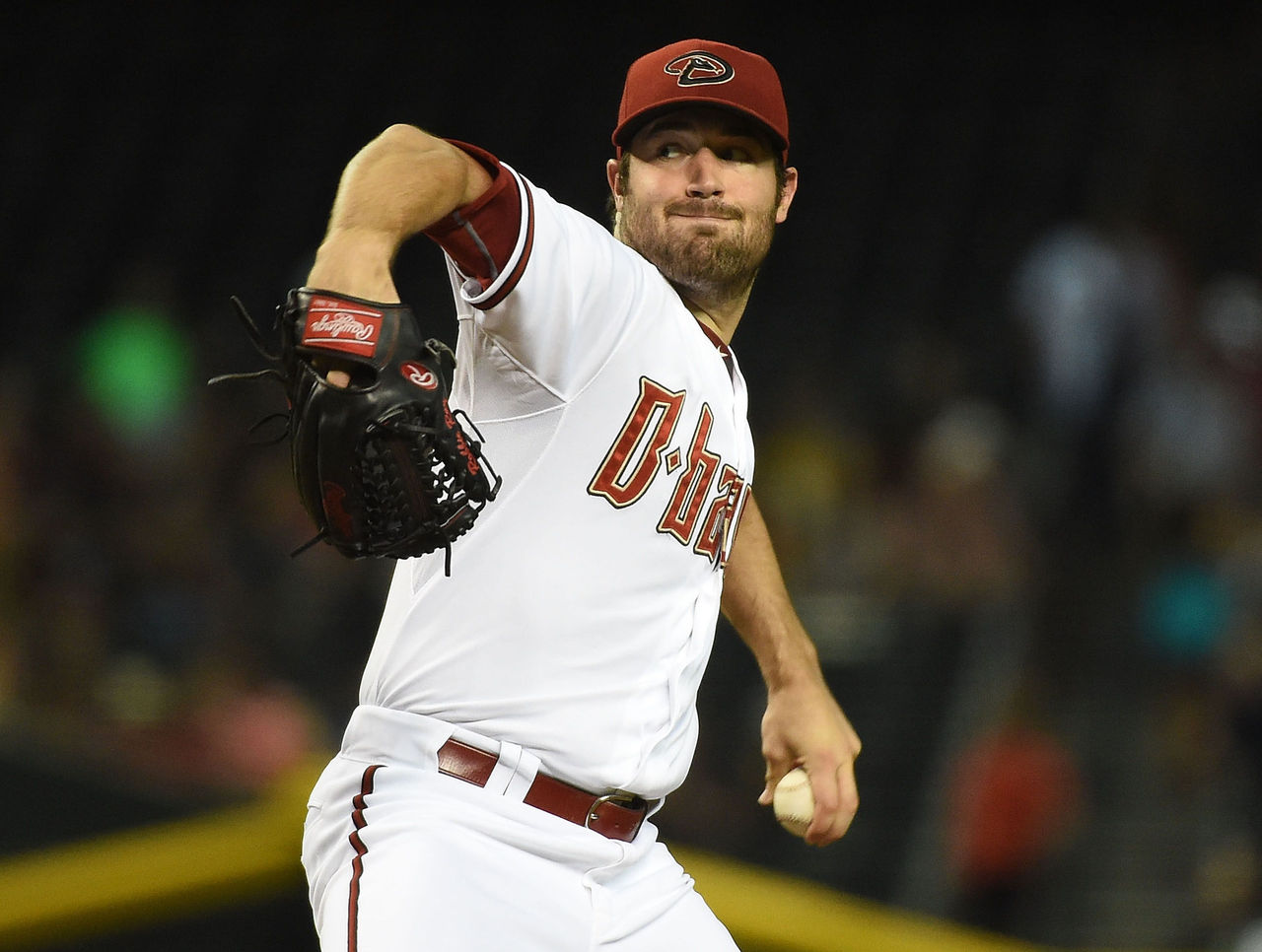How to Effectively Stream Pitchers in Fantasy Baseball
So you've made it through your fantasy draft and you marvel at the fearsome ensemble of bats you've put together. You were able to somehow land the exact hitters you wanted at or near the picks they were expected to go at.
Unfortunately, your strong group of sluggers came at the expense of a severely neglected pitching rotation. While your opponents have multiple ace-level talents they can pencil in for 200 innings of high-level ball, you're looking at a staff led by James Shields, Justin Verlander and Matt Moore.
Your batting order might be ready for the postseason, but it's clear that you're going to need some help staying competitive in the pitching categories.
Have no fear. With some creative, on-the-fly lineup maintenance, you can build an effective pitching rotation from pieces found on your league's waiver wire.

Streaming Pitchers
The art of streaming is fairly simple: as the average starter only pitches once every five or six days, he's essentially useful only 20% of the time on a standard roster. Instead of keeping a sub-par pitcher on your roster, use all the available player-adds at your disposable to roster starting pitchers from the waver wire.
The most common categories that fantasy leagues take into account for pitchers are wins, strikeouts, ERA, WHIP and saves.
The rate stats - ERA and WHIP - are generally going to be hurt by waiver-wire-level pitching, while closer usage on a game-to-game basis is difficult to predict. Wins and strikeouts, however, can be predicted with some certainty, based on a variety of factors.
If you're considering streaming, your rate stats aren't going to be great to begin with, so you can afford to sacrifice ERA and WHIP if it means securing wins and strikeouts. If your league allows for five player adds per week, that gives you an opportunity to add five more wins and at least 25 strikeouts to your totals for the week - possibly enough to tilt a matchup in your favor.

Important Factors to Consider
When selecting a player from the waiver wire to stream, take these four simple factors into consideration :
- Opponent Runs Per Game
- Team Strikeout %
- Park Factor
- Batter vs. Pitcher Splits
If the goal of streaming pitchers is to target a win and rack up strikeouts, the simplest factor to consider is the potency of the lineup a pitcher is facing.
Last year, the Toronto Blue Jays scored an MLB-leading 5.5 runs per game. It's unlikely that a waiver-wire pitcher would win a game against them. Instead, target weak offenses where a low-level pitcher could conceivably steal the victory. Teams like the Braves, Marlins and Phillies were among the league's most futile offenses, making them great teams to stream against.
Strikeouts are a little harder to predict than wins, but there are sites that track an entire team's collective strikeout percentage. Last season, the Chicago Cubs struck out on 24.5% of their plate appearances, making them prime targets for fantasy players chasing strikeouts.
On the pitcher's end, you're not likely to find a solid starter that strikes out a batter per inning; those are the types of pitchers that are drafted and kept. Instead, look for starters that strike out more than seven batters per nine innings. Against a team that fans a lot, even a middling pitcher has the potential to strike out five or more batters.

Park factors show how a specific ballpark favors hitters or pitchers relative to a completely neutral field.
Different methods for determining park factors exist, but the hard and fast rule for streaming pitchers is to avoid starters in decisively hitter-friendly parks (the Rockies' Coors Field; the Rangers' Globe Life Park; the Orioles' Camden Yards) and give an edge to pitcher-friendly environments (the Giants' AT&T Park; the Angels' Angel Stadium; the Mariners' Safeco Field).
With even the slightest effort, examining the opponent's average runs per game, strikeout rate and the field of play will yield a fuller understanding of a pitcher's potential to succeed in a one-off start beyond reductive indicators of success like ERA.
Split analysis - examining the differences between how a pitcher does against right-handed batters vs. left-handed batters, or how a team hits against lefties or righties on the mound, or even how a pitcher performs at home versus on the road - can be a substantial difference-maker.
For fantasy players really looking for an edge, taking a deeper look at how a team hits against a certain handedness of pitcher can give the best indicator of success. For example, the St. Louis Cardinals hit just .230 as a team against left-handed pitchers in 2015; Seattle hit only .241 against righties.
As easy as it is to boil a pitcher's effectiveness down to numbers like wins or ERA, remember that every start a pitcher makes is unique. Sometimes a great pitcher implodes, and sometimes a waiver-wire pickup can be an ace for a day. There is plenty of data to use when determining who to add for a start.

Maximizing Two-Start Weeks
A variation of the one-start streaming strategy is targeting two-start pitchers. Depending on the restrictions put in place by a league, sometimes there simply aren't enough player adds per week to make the traditional streaming strategy worthwhile.
You can still maximize your weekly player adds by looking for waiver-wire pitchers projected to have two starts within a week. Nearly all pitchers tabbed to start Monday or Tuesday will pitch again on the upcoming weekend.
Take the same approach used above for determining potential one-start pitchers but account for both of a pitcher's matchups. In some cases, a lesser pitcher with two starts on the week is going to be more valuable than using a precious waiver addition on a pitcher with only one start.